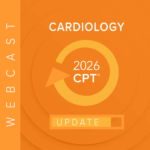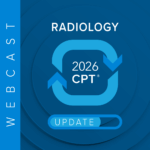PERIPHERAL & CARDIOLOGY CODER
Relationships matter in the coding world, just as in everyday life. For instance, consider coders who’ve established a great rapport with their physicians: Through effective, timely dialog, they’re able to efficiently get the documentation detail and clarification they need to achieve accurate and complete code assignments.
Relationships also play a vital role for MedLearn Publishing and the development of our how-to resources. A prime example of this is our partnership with preeminent coding and billing consultant Terry Fletcher, BS, CPC, CCC, CEMC, SCP-CA, ACS-CA, CCS-P, CCS, CMSCS, CMC, QMGC, QMCRC, QMPM.
More than two decades ago, Terry approached MedLearn about an idea for a unique coding resource. The result was our Peripheral & Cardiology Coder, which was first published in 2001 and continues to be one of our most popular resources. Through all these years, Terry has served as an expert contributor to the publication.
For this “Industry Expert Review,” we asked Terry for her take on why Peripheral & Cardiology Coder remains a trusted resource now and throughout the past 22 years.
Driving the need for this publication: Prior to Peripheral & Cardiology Coder, no resource addressed coding for this area of sub-specialization: diagnostic and interventional cardiac catheterization procedures, plus diagnostic, and therapeutic interventional radiological (peripheral) procedures. As a result, there was a lot of coder confusion surrounding medical necessity, physician intent, and coding rules. What we envisioned, and what this publication delivered, was a resource that was a carveout of more comprehensive coding resources. We also believed that coders needed more than just a compilation of codes and code descriptions, that they could also benefit from clear explanations of services provided and guidance on how to code compliantly. Peripheral & Cardiology Coder delivers all of this.
Favorite feature: In addition to narrative instruction, this resource uses a variety of tools to augment the learning process, including concise coding tips, quick-reference tables and anatomical illustrations. But I especially love the case studies — they help make this resource a real-time interactive workbook. The team has developed these case studies using actual redacted records that cover services from simple and routine to highly complex. The case studies reinforce important concepts, such as the use of physician codes versus outpatient facility codes. Most other resources don’t help with this differentiation, which can lead to incorrect coding.
Value and ROI: Peripheral & Cardiology Coder is cost-effective from a number of perspectives. For starters, instead of training staff on a quarterly basis, I suggest to my clients that they conduct training once or twice a year, and provide their coders with this resource to use as an on-the-job coding companion. Also, I see this book as a “one-stop shop.” It combines a number of elements, such as CPT® coding, ICD-10 coding and NCCI, into one resource, enabling providers to put together a comprehensive coding package that they can submit to payers.
Uniqueness vs. other resources: First of all, Peripheral & Cardiology Coder caters to physicians who practice within a very specific area of cardiology. Other coding publications in this space cover a much broader spectrum of services that don’t apply to cardiologists (i.e., cardiac surgery). These resources are also more expensive and therefore not a good value for our intended customers. Another important distinction is that Peripheral & Cardiology Coder doesn’t just contain codes and descriptions; it also provides guidance with the proper application of these codes. Furthermore, because it so clearly explains complex topics, coders and other non-clinicians are empowered to have productive conversations with their providers.
Importance of subscribing every year: Changes are occurring all the time, and not just to codes and their descriptions, but to policies and the correct application of codes. Using outdated resources can be very costly, especially when you consider that audit paybacks average around $20,000 and are often in the $100,000 to $200,000 range. Even one seemingly minor mistake, whether it’s an incorrectly coded procedure or a missed capture, can cost several hundred dollars. When you consider how reasonably priced Peripheral & Cardiology Coder is (currently $237), it’s easy to understand how you can quickly recoup and even make money on your investment.
Click here to discover more information about Peripheral & Cardiology Coder.











